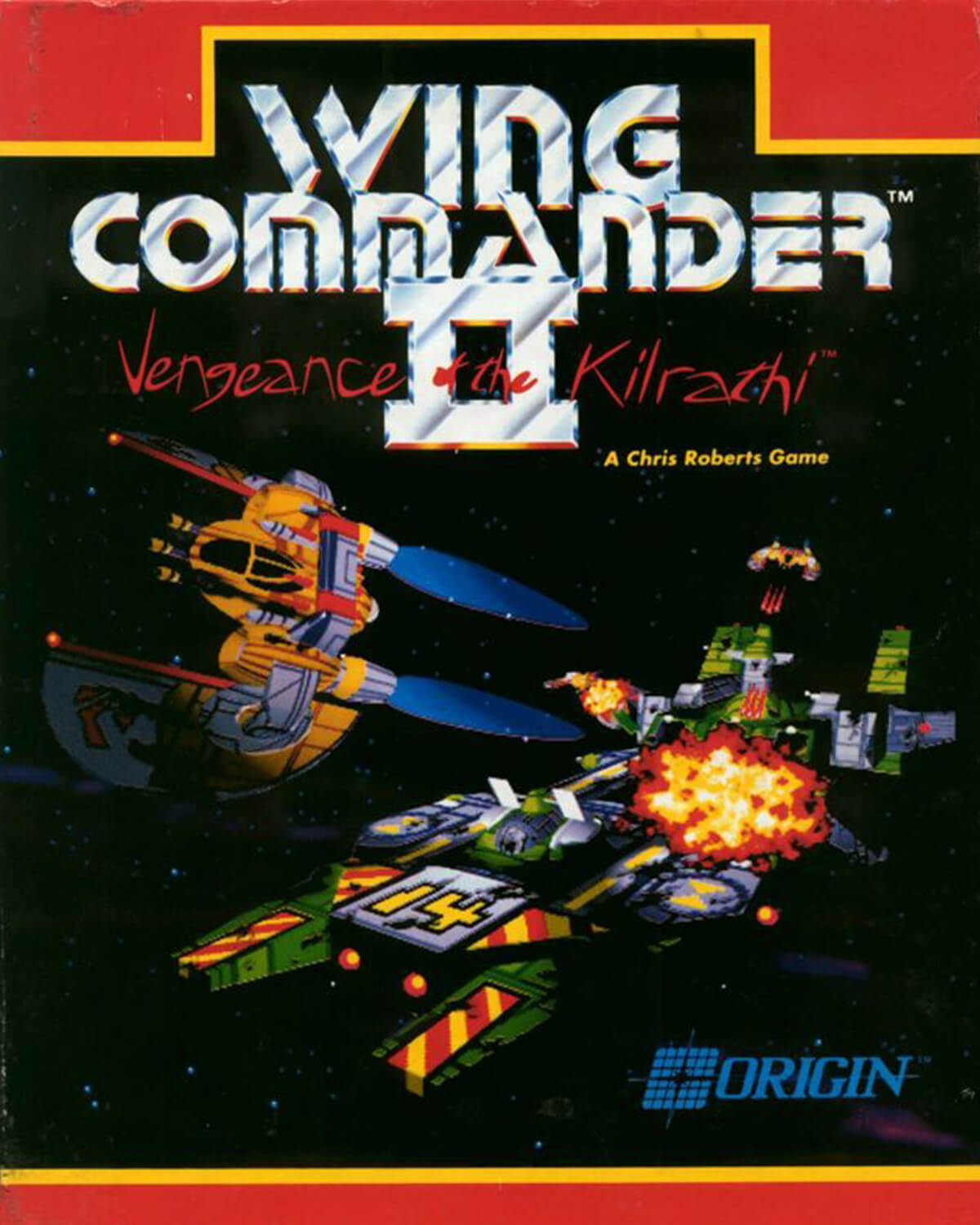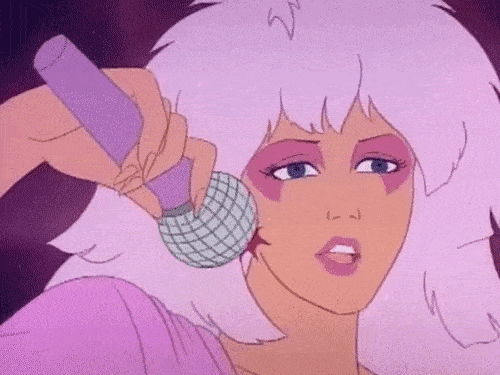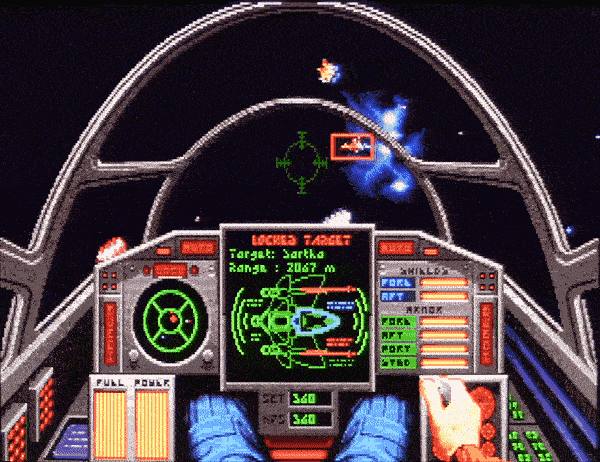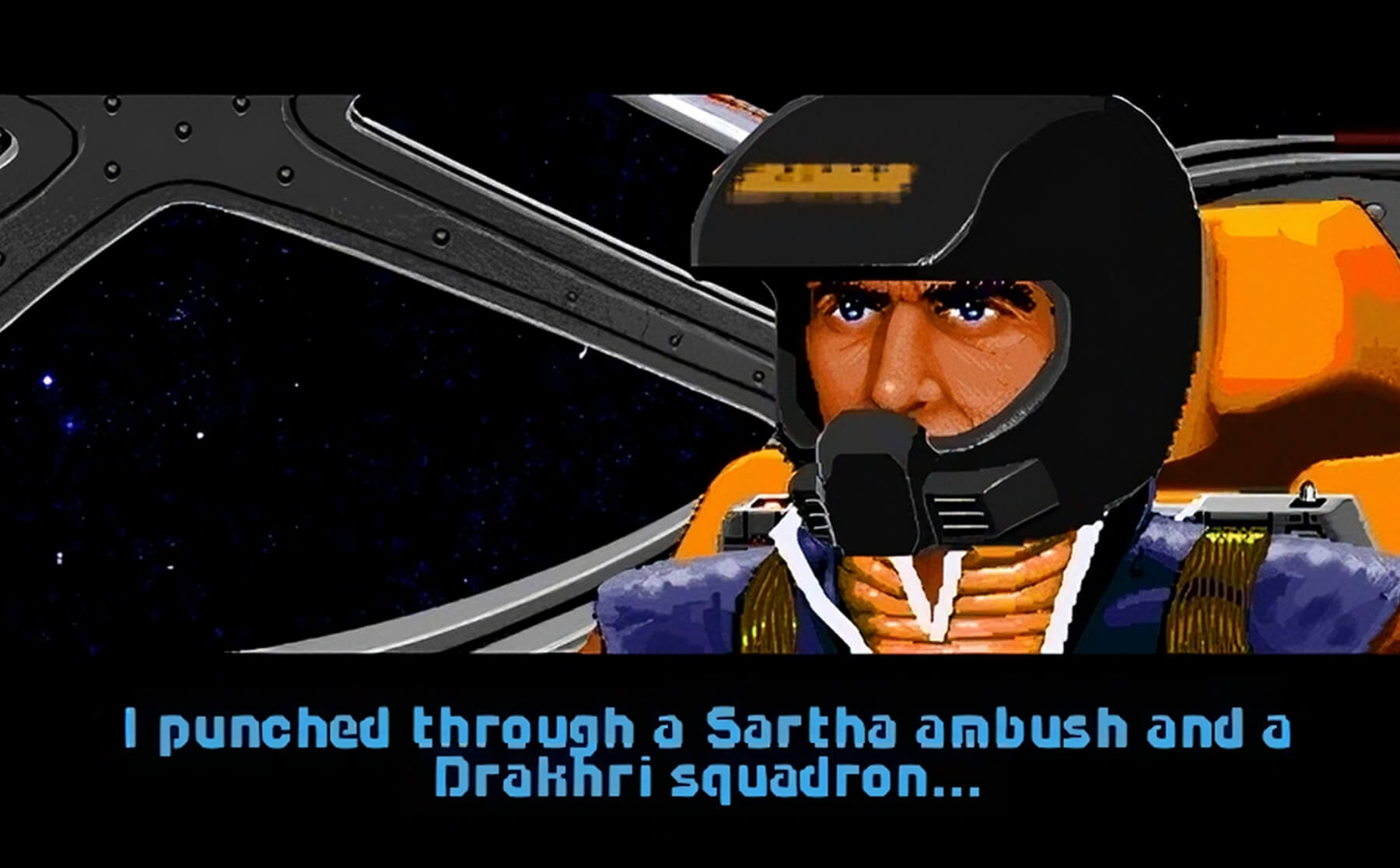DigiPen instructors bring remarkable professional experiences to the classroom. In our Faculty XP series, we’ll zoom in on some of those fascinating career histories with focused Q&As.
Collaborating on student game teams is a cornerstone of the DigiPen experience — and as a result, so is the mentorship of Ellen Beeman, senior lecturer and chair of DigiPen’s Department of Game Development and Production. Credited on over 40 video games as a writer, producer, and designer, Beeman’s done it all, bringing her wealth of experience to bear on DigiPen student game teams navigating the development process.
 Even at the dawn of her gaming career, Beeman was recognized as someone you want helping pilot the ship. Originally a sci-fi/fantasy novelist and animated TV scriptwriter, Beeman transitioned to PC game writing in the early 90s. She landed one of her earliest roles at Origin Systems on a brand new IP the studio was just weeks away from shipping, Wing Commander. The aerial space combat sim turned into a surprise smash hit, raking in a slew of perfect reviews, Game of the Year awards, and stellar sales with its 27th century tale of the human Terran Confederation battling feline, alien aggressors, the Kilrathi. A little over a month into her initial assignment writing the game’s expansion packs, Origin promoted Beeman to a producer/assistant director role, listing her studio game credit as “Lt. Col. Ellen ‘Lady Blue’ Guon.’”
Even at the dawn of her gaming career, Beeman was recognized as someone you want helping pilot the ship. Originally a sci-fi/fantasy novelist and animated TV scriptwriter, Beeman transitioned to PC game writing in the early 90s. She landed one of her earliest roles at Origin Systems on a brand new IP the studio was just weeks away from shipping, Wing Commander. The aerial space combat sim turned into a surprise smash hit, raking in a slew of perfect reviews, Game of the Year awards, and stellar sales with its 27th century tale of the human Terran Confederation battling feline, alien aggressors, the Kilrathi. A little over a month into her initial assignment writing the game’s expansion packs, Origin promoted Beeman to a producer/assistant director role, listing her studio game credit as “Lt. Col. Ellen ‘Lady Blue’ Guon.’”
Beeman would go on to write and produce five Wing Commander titles at Origin, including Wing Commander II: Vengeance of the Kilrathi, a sequel that catapulted the series to even bigger critical and commercial success. Wing Commander II was hailed as a new bar setter for video gaming upon its 1991 release, particularly for its many industry firsts in game narrative that we take for granted today — a complex, branching storyline; full voice acting; and film-like cinematics. We sat down with Beeman to talk about her spacefaring days on the series and the galactic success that followed.
How did you go from writing animated TV shows to video games?
I owe everything to one wonderful mentor. Her name is Christy Marx. She was the creator and story editor of the animated show Jem and the Holograms. She bought my first script! She was the one who got me started in television. Then in the late 80s, there was a huge crash in children’s television. I was working at Marvel Productions, Marvel’s animation studio, and they laid off 75% of the company. Christy then discovered, hey, video games! Video games are a good career. She introduced me to the first company that hired me to write for video games, and ever since then, video games have been the most amazing career for me.

Origin was the second game studio I worked for. I joined them just as they were about to ship Wing Commander I. They hired me to be a writer for the series. They first assigned me to The Secret Missions, the two add-on expansions for Wing Commander I. I was writing those for about six weeks before they said, “Oh, we were completely wrong about you,” which of course was a heart-stopping moment! They said, “We don’t need you just as a writer. We need you as a producer!” They handed me projects, a whole team, and sent me off to make these games. That was a wow moment for me. It was not the direction I thought my career was going to go in.
I realized I was closing my eyes to sleep at night and seeing images of spaceship afterburners baked into my retinas
After working on five games in the Wing Commander series, I realized I was closing my eyes to sleep at night and seeing images of spaceship afterburners baked into my retinas. I realized I had to work on something else. I just couldn’t keep doing sci-fi aerial combat games! That’s when I left Origin. Somewhere I still have this — Origin printed up, “I’ve seen Wing Commander II” buttons for us to give out and wear at trade shows. The game team modified it to say, “I’ve seen (too damn much of) Wing Commander II.”
I have to say though, there are a few projects I’ve worked on in my career that I’m especially proud of, and Wing Commander II is absolutely one of them.
What was it like joining Origin right before Wing Commander blew up and suddenly realizing you had the power to shape this new, massively popular franchise?
We didn’t realize how big the franchise was going to get honestly. Wing Commander I was a hit. Wing Commander II was an insane hit! To give you an example, one year I was at the Game Developers Conference, and I was introduced to one of the guys who worked at this PC audio card company, Sound Blaster. He came up to me and said, “Can I hug you?” That’s because when Wing Commander II shipped, a week later the entire country had sold out of Sound Blaster audio cards! We basically made their company with this game. It was the first “talkie” video game. We had tons of voiceovers and a fantastic soundtrack, and that’s something that sold audio cards like crazy.
I knew I was working on something cool with Wing Commander II, but I didn’t fully realize it until there was this one moment. When I had a few minutes to spare, I was, of course, playing another aerial combat sim while working on our own. I contacted Lucasfilm Games’ customer service line, because I had a technical issue with a game of theirs. I got to talking with the rep, and they were like, “Oh my god, you’re on Wing Commander II? I’m dying for that game to come out! I just can’t wait!” And I was like, “Well, I like your game too! Can you fix this problem for me?”
Wing Commander II was a huge step forward in game narrative, being one of the first talkies like you mentioned. It also introduced some of the earliest examples of the film-like cinematics we have today. What was it like working in game narrative when those frameworks hadn’t been established yet?
Here’s where my TV experience became really useful! One of the studios I sold scripts to was Filmation, and they were famous — or, infamous — for setting up their animated shows for maximum footage reuse. With He-Man and She-Ra, for example, they animated their one transformation scene where they raise their swords, and then used that same scene in every single episode.
I was able to bring that experience to Wing Commander II. A big part of what I initially did was rewrite the narrative system to handle really cinematic stuff. A key in pulling that off was reusing our animations! In addition to animation being expensive, there was also the reality of having to ship this entire game in a limited number of [floppy] disks. I’m pretty sure nobody had done that yet, applying TV animation reuse techniques in video games. But it got us a lot of narrative content pretty inexpensively.
Was it hard to keep the game’s complex branching narratives within that disk limit? That seems like something that could balloon quickly.
It did! When I’m working with students who are doing narrative, I’m like, “OK, think of how much you need. Cut that in half. Now cut that in half again. Now you’re probably close to what you actually should have.”

What was it like to work at a game studio in that era in the very early 90s?
It was much more haphazard and seat-of-the-pants than the industry today. In a lot of respects, we didn’t know what we were doing. Now there are things like engineering best practices that I talk with students about all the time. We had none of that back then — we had no clue!
I would not accept this on a student project now, but there were sections of Wing Commander II’s engine code that you literally could not touch. We had comments around it saying, “Do not touch this or the game will never build again.” In many ways, it was a dream project where everything came together. But in other ways, it was sheer chaos.
I saw that one gaming magazine gave Wing Commander II a 6/5 on their review scale! What was it like to see something you had such a major role in take off, both in terms of sales and glowing reviews?
People definitely knew my name after that, so that was lovely. But part of the success of the project is that it got ported to lots of different platforms. I got calls for years going, “Hey, Ellen. There’s this comment in the code. What does it actually mean when it says, ‘Do not touch?’” It was so embarrassing. I had to deal with people asking me about that horrible thing like five times. If I were to go back in time, I would have cleaned that up. I felt so bad for these port teams who worked on that nightmare code.
The best thing about the game though was my very close partnership with [Wing Commander II project director and former DigiPen instructor] Siobhan Beeman. And, yes, we have the same last name! I joke sometimes about Wing Commander II. I say, “This game was great. We got all these awards, and I also got a spouse and two wonderful daughters out of it.” That’s part of why it’s going to have to be my favorite project forever, because the rest of my life came out of it.

Another fun story. After Wing Commander II shipped, I attended the World Fantasy Convention in 1991. [Discworld book series author] Terry Pratchett was also attending. He and I basically spent the entire weekend talking about Wing Commander II. He was a huge fan. Towards the end of the convention, another author asked, “What on Earth have you two been talking about all weekend?” Terry, an amazing and hilarious guy, dropped to one knee, raised his arm to me, and proclaimed, “This … is the woman … who wrote Wing Commander II!” I don’t think I’ve ever been as embarrassed or delighted.
You also wrote the Wing Commander series’ first novelization! That seems like such a unique opportunity. What was that like?
I was already co-writing books with Mercedes Lackey. She’s an amazing woman and bestselling fantasy author. Our book publisher said, “This game is huge. You should write novels for it.” The crazy thing was, we only had six weeks to write the whole book! To pull it off, I stayed with Mercedes that whole time. She’s a night owl and I’m an early morning person, so she would write all night and I would write all day. We wrote in shifts like that until we finished. It was an incredible opportunity and the book turned out great, but it was a crazy writing process that I don’t think I’ll ever replicate again!
Now that you’re a teacher, are there any lessons from your Wing Commander days you try to impart to DigiPen students?
Yeah, don’t fly by the seat of your pants like we did! It really comes down to that. Students working on these two- to three-semester game projects don’t have the time to make all the crazy mistakes we did. It is one of the great joys of working with student teams that I can help them avoid these kinds of mistakes so they can create their own great games.
